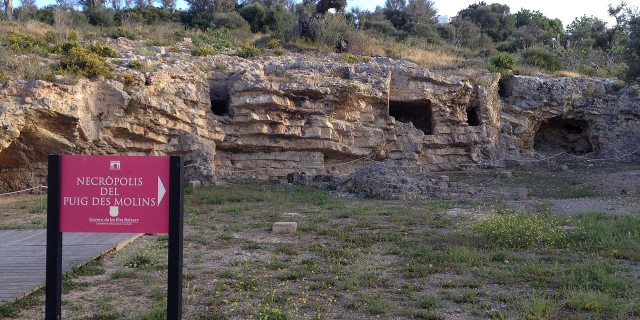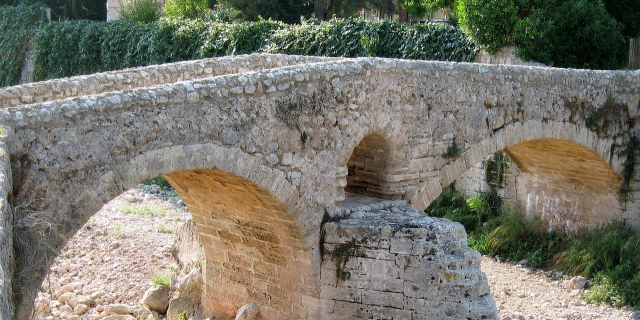Es Caló is a population center in Formentera, in the parish of Pilar de la Mola, next to Carnatge and Ses Clotades. It is located in a corner of the Tramuntana coast, at the north-eastern end of the Isthmus des Carnatge, at the foot of La Mola, at the beginning of the old road up to La Mola called the Roman path by cobbled seat
Before it was called es Caló des Frares or es Caló de Sant Agustí, since it is believed that the hermits of the old monastery of Sant Agustí de la Mola used it. It has traditionally been used as one of the island's ports, but only for small boats and impassable in northerly winds. The small port is surrounded by fishermen's huts and jetties.
The urban core is small, with 52 inhabitants in 2008 in its urban core, and 383 scattered inhabitants. Of these 435 total inhabitants, 230 are men and 205 are women. It was developed from the seventies with buildings aimed at tourism. In the building called ca s'Alambí, in 1858 Joan Marí i Mayans inst...Read more
Es Caló is a population center in Formentera, in the parish of Pilar de la Mola, next to Carnatge and Ses Clotades. It is located in a corner of the Tramuntana coast, at the north-eastern end of the Isthmus des Carnatge, at the foot of La Mola, at the beginning of the old road up to La Mola called the Roman path by cobbled seat
Before it was called es Caló des Frares or es Caló de Sant Agustí, since it is believed that the hermits of the old monastery of Sant Agustí de la Mola used it. It has traditionally been used as one of the island's ports, but only for small boats and impassable in northerly winds. The small port is surrounded by fishermen's huts and jetties.
The urban core is small, with 52 inhabitants in 2008 in its urban core, and 383 scattered inhabitants. Of these 435 total inhabitants, 230 are men and 205 are women. It was developed from the seventies with buildings aimed at tourism. In the building called ca s'Alambí, in 1858 Joan Marí i Mayans installed the first distillery to produce frigola liqueur and the typical Ibizan herbs. It was the embryo of what would later be the Marí Mayans liquor factory in Ibiza.
Next to the port, towards the west, are ses Platgetes, a stretch of coastline made up of a series of small, consecutive coves. They are small rocky outcrops alternating with areas of white sand that form a dune system with permanent vegetation: pines, sagebrush and garrigue. The slope is gentle and the bottom is rocky with sandy areas. It extends along 100 m with an average width of 25 m.
The most important landmark forming a small island, on the segment of coast that separates Caló from Cala en Baster, on the north-northeast side of Formentera, is the rock of Jaume.
































Add new comment